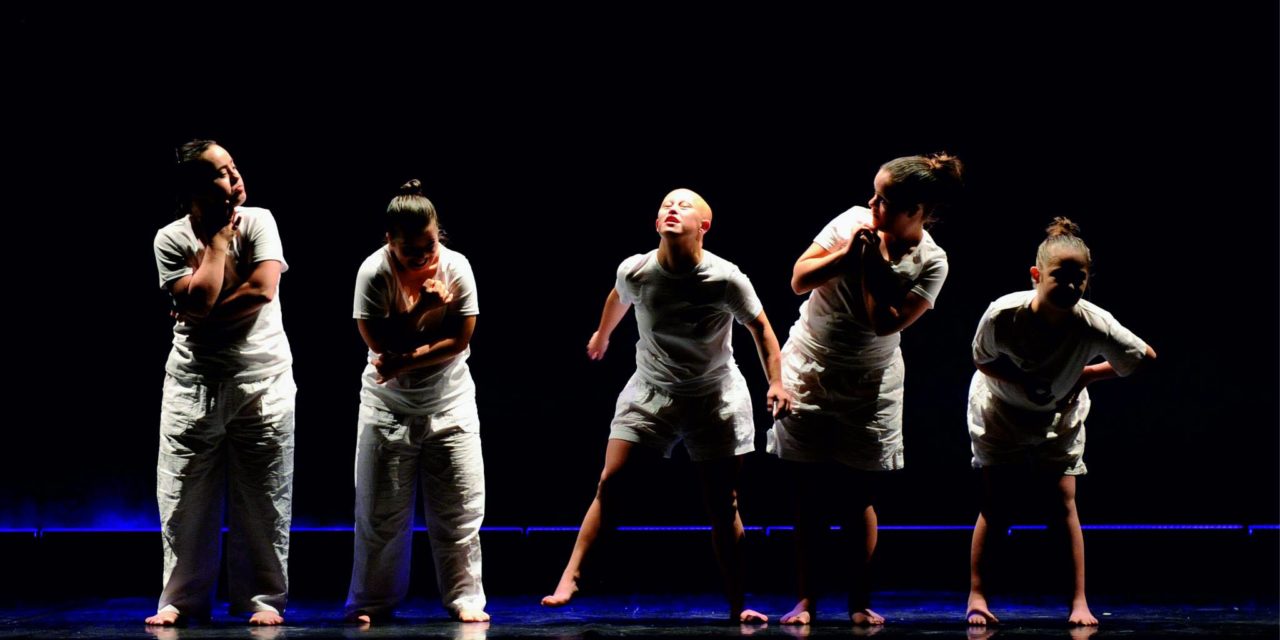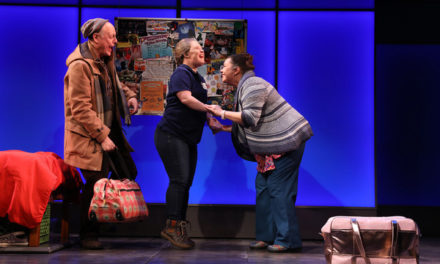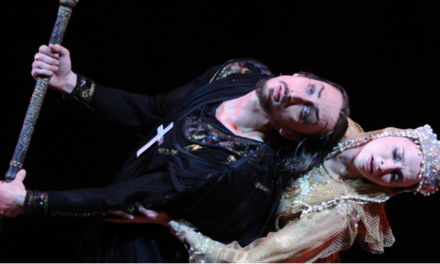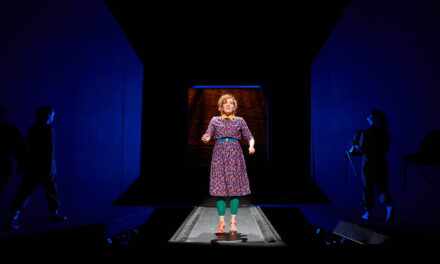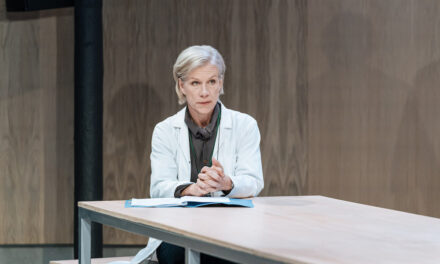The notion of “dance and disability” as a sector of the arts in its own right is both troubling and beneficial to disabled artists across different art forms. It is also a notion that varies significantly between different geographic and cultural contexts. UK experience tells us that the development and progression of art that includes and is made by people with disability is dependent on policies and political frameworks for support. Without such formal structures, disability arts as a sector that is “recognized” in its own right wouldn’t be possible or would be the privilege of some, while others stay marginalized and under-supported.
Locating disability in the arts, be it as a specific phenomenon or considering disability arts as a separate sector, suggests that it requires a separate framework of understanding. This opens the way to a separation between a sector which is the “norm” and one that is the “non-normative,” linked to notions of “right” (dominant/non-disabled) and “other” (passive/impaired). A compelling argument against programming work by/with disabled artists “outside” or “alongside” mainstream art is exactly to prevent this perception of disability as “otherness.” Moreover, as long as disabled artists and their arts are identified as “other” they are more easily absent from mainstream leadership and power structures that can bring about shifts and changes in the arts in broader terms.
It is useful to note here the distinction between “disability art” or “disability and art” – both of which refer to a more generic understanding of art made by and including people with disabilities – and Disability Arts, which refers to an established field of practice, as “art made by disabled people which reflects the experience of disability.” (1)
Richard Phoenix, the founder of Constant Flux, a UK organization creating opportunities for musicians with learning disabilities, suggests that the current segregation between disability and art on one hand, and Disability Arts, on the other hand, is to be reconsidered; putting them together as a single entity leads to “strength in numbers.” It also helps to create a counter-narrative to the typical media representation of people with disabilities as victims (stories about people with disabilities linked to hate crime are common). Conversely – he says – creating a distance between this field and the arts, in general, can further separate and even ghettoize disability art and maintain its association as being the “other.” In his opinion producers and programmers in the arts are key to influencing the perception of work made by and including disabled artists. The aim should be for theatres and festivals to programme artists of all abilities and simply disregard the differences.
The needs of disabled artists are diverse, not standardized. This diversity asks for a debate on how to best fight for the rights of artists who are facing all kinds of barriers before their work can be exposed to the public. However, for the artists it is important to be considered in terms of quality – the indulgence of special treatment would never help to add value to their work. Considering a model of placing disability and arts and/or Disability Arts in its own sector continues to build on the concept of exclusion instead of inclusion.
In any case, if art and disability were to be seen as a distinct sector, the best model would be one with disability arts companies that are disability-led. In that case, the sector could be defined by the creative leadership being the domain of disabled people. This would reiterate the value of disabled artists as leaders of their own work and support the view that a field of arts and disability is well placed to make room for the artist’s voice.
Apart from the discussion on arts and disability as a separate sector or not, conversations in the field revolve around other key issues: the identity of disabled artists, the role of curating and programming, the social model of disability, and the need for political engagement and consequent funding.
Simon Raven of Northumbria University suggests that Disability Arts is already a sector (albeit marginalized) offering a vital cultural platform to both disabled and non-disabled artists/audiences to consider how creativity can be informed by a human difference. By stimulating audiences to look and perceive differently and cast their habitual thought patterns aside, Disability Arts provides a means to address constructions of identity and in this way, Disability Arts might address lived experience of impairment and difference, whilst also seeking to reveal and redress forms of social marginalization. Disability Arts might challenge “acceptable” neoliberal notions of “diversity,” as propagated by mainstream culture.
Disabled artists might be expected to have a particularly nuanced approach to tackling disability, drawing from both lived experience and critical reflection, but the artistic treatment of disability should not necessarily be limited to disabled people. Mainstream venues should focus their curatorial attention on redressing a historic lack of artistic engagement with a disability. If Disability Art became a more recognized sector within the arts and major arts institutions commissioned and curated disability art, an enlivened critical discourse about “diversity,” difference etc., and more opportunities for disabled artists could be expected.
Luke Pell, Claire Cunningham, and Jess Curtis offer a helpful summary of their shared discussion concerning the question of disability and the arts as a separate field. They believe for some people a separately-defined sector in its own right is useful; some individuals, artists, and communities absolutely wish to locate themselves and identify with a specific territory that offers a particular lens, heritage, politic, and aesthetic sensibility to their practice. This is typical of the UK context, due to the history of theory development and the radical disability rights movement in the UK of the past thirty years. The introduction of the Disability Discrimination Act in 1995 employed the Social Model of Disability in order to address reasonable adjustments that ensure disabled people could fully participate in society. The social model— unlike the medical model of disability— doesn’t locate disability in the individuals, but rather in the physical and attitudinal barriers found around them: disability is not something people have (we are not people with disabilities), but is something done to people with impairments. People with impairments are disabled by poor or non-existent access to the public places where ordinary life happens and by the condescending or unwelcoming responses of those who occupy these places (2).
Claire Cunningham, Scottish dance maker, and performer gives a personal perspective within which she highlights economic factors as key to the development of Disability Arts in the UK. One important factor in the UK is money. “Money has been invested in disability arts/art-by-disabled-artists, pure and simple. I would be both an ignorant, and privileged fool to pretend that my position or my career were not the results of genuine investment, financially as well as creatively, in an artist.”
Cunningham gives a detailed example referencing her own experience as an artist based in and supported by funding structures in Scotland: “My specific degree of ‘success’ as an independent artist and disabled artist is directly related not just to being in the UK but to being in Scotland, as in recent years the Scottish Government chose to invest in culture as something nationally important, and significantly, as an ‘export.’ Our national arts body/ funder, Creative Scotland, chose to go beyond legislation, for example, to ensure basic equality and diversity requirements with regard to disability. Scotland chose to invest in disabled artists as an area of specific artistic focus and development. It supported the development of artists like myself to research and make work, to pursue bespoke training (because institutional training was and is still not particularly suited to supporting disabled dance artists(3)), and to a platform that works at home and abroad.”
No matter where I perform, in my career nothing will be as vital as my performance in 2008 at DaDaFest in Liverpool—the UK’s longest running disability arts festival. For the first time, I knew I was playing to a room of my peers – to other disabled people, many of whom were quite politically active, indeed militant regarding disability. I knew I would genuinely be told the truth about my work, and I would be told if it reflected badly on disabled people generally. There is a weight to the sense of responsibility that comes with being identified with any minority group. You are seen as representing everyone. Every work I make, every public image, every tweet, document, etc., I have to check, to vet that it is not reinforcing any negative stereotypes of disability, not taking backwards steps, and that can be exhausting, and then, of course, I am also a female choreographer on top of that, but that is a whole other publication! (4)”
The way in which an individual artist wants to identify in this sector is a personal experience; some find disability a core part of their creative identity and others find it restrictive. To stand alone as a sector might feel complicated and segregated. However, one sector which can include different perspectives and expressions could present an interesting model. In this publication we have aimed through our call-out and invitation to write a letter, to represent a range of perspectives and experiences.
Notes
(1) as defined by Disability Arts Online: http://www.disabilityartsonline.org.uk/what-is-disability-arts
(2) see http://www.disabilityartsonline.org.uk/why-we-are-disabled-people-not-people-with-disabilities
(3) See S. Whatley, ‘Moving Matters: Supporting Disabled Dance Students in Higher Education’, Coventry University and I.J. Aujla & E. Redding, ‘Barriers to dance training for young people with disabilities’, British Journal of Special Education, 40 (2), 2013
(4) Another Fresh Perspectives issue deals indeed with gender: P. Charhon, ‘Of boxes and ceilings. Fresh Perspectives on Arts and Gender’, IETM, Brussels 2016
This article was originally published on www.ietm.org/en/publications in K. Marsh, J. Burrows (ed.), “Permission to Stare. Fresh Perspectives on Arts and Disability,” IETM, Brussels, September 2017. Reposted with permission.
This post was written by the author in their personal capacity.The opinions expressed in this article are the author’s own and do not reflect the view of The Theatre Times, their staff or collaborators.
This post was written by Kate Marsh and Jonathan Burrow.
The views expressed here belong to the author and do not necessarily reflect our views and opinions.

